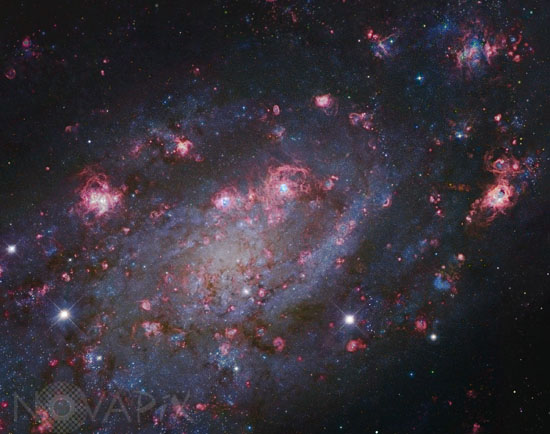Photo Agency - Astronomy - Space - Nature

Supernova Sn 2004dj in galaxy NGC 2403
author: Nasa/ESA/NAOJ/ R.Gendler/Novapix
reference: a-snv02-00402
Image Size 300 DPI: 20 * 16 cm
The explosion of a massive star blazes with the light of 200 million Suns in this image. The supernova is so bright in this image that it easily could be mistaken for a foreground star in our Milky Way Galaxy. And yet, this supernova, called SN 2004dj (middle left), resides far beyond our galaxy. Its home is in the outskirts of NGC 2403, a galaxy located 11 million light-years from Earth. Although the supernova is far from Earth, it is the closest stellar explosion discovered in more than a decade. The star that became SN 2004dj may have been about 15 times as massive as the Sun, and only about 14 million years old. (Massive stars live much shorter lives than the Sun; they have more fuel to "burn" through nuclear fusion, but they use it up at a disproportionately faster rate.) The large number of massive stars in NGC 2403 leads to a high supernova rate. Two other supernovae have been seen in this galaxy during the past half-century. Sprinkled across the region are pink areas of star birth. The myriad of faint stars visible in the Hubble image belong to NGC 2403, but the handful of very bright stars in the image belong to our own Milky Way Galaxy and are only a few hundred to a few thousand light-years away. composite of images taken by the Hubble space telescope (HST) and Subaru telescope.
Contact : Stéphane Aubin +33-(0)9-51-26-53-76
© Novapix - All rights reserved


